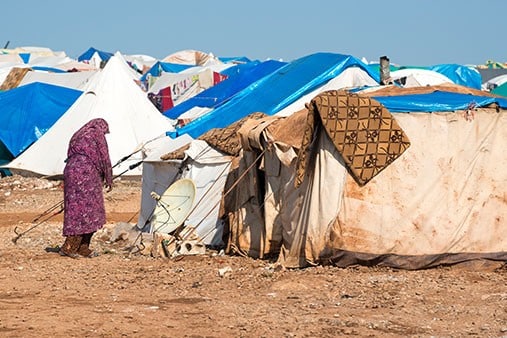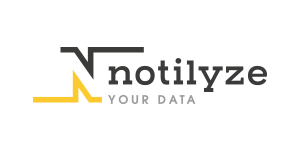- Customer Success Stories
- Notilyze

Forecasting population and need for supplies in refugee camps

Notilyze uses SAS® Viya® to forecast population in refugee camps.

Know in seconds
how many people are in the camp and what this means for the demand of relief supplies.
Notilyze achieved this using • SAS® Viya® • SAS® Visual Analytics • SAS® Visual Data Mining and Machine Learning • Microsoft Azure
A team from Notilyze has demonstrated how SAS® Viya® and external data sources can provide valuable insights into the population in refugee camps by automating manual processes and by integrating and leveraging different data sources.
Yearly, 1.3 billion dollars of humanitarian aid funding is wasted due to outdated supply management practices in refugee camps according to Réseau Logistique Humanitaire. As a result, an estimate of 2 million people per year cannot be provided with essential humanitarian supplies to keep them safe and in good health.
Currently, most information about the population in refugee camps, refugee needs and the situation in the camp, comes from manual surveys. Due to the nature of the manual surveys, demand planning is based on outdated data. This often leads to shortages in supplies like medicine and shortages in workforce.
For the 2020 SAS® Hackathon, the team from Notilyze partnered with ELVA and the International Organization for Migration (IOM) to build a Camp Forecasting tool to enable refugee aid agencies to become more data driven by automating the manual survey process and integrating and leveraging other data sources.
“One of the central themes of the SAS® EMEA Hackathon 2020 was sustainability. This inspired us to enable refugee aid agencies to do more with their existing resources and become more sustainable in the process”, says Tom Dogger, co-founder at Notilyze.
SAS® Viya® is a powerful tool capable of processing large amounts of data, like daily satellite images, and can analyze the data using robust machine learning algorithms. The possibilities are endless but one next step that excites me the most is the cross-camp collaboration. By combining data from several refugee camps the different aid agencies can act quickly to move supplies like medicine from a camp with a surplus to another camp with a deficit. Tom Dogger Co-Founder Notilyze
Using satellite images to estimate population
The team started out by extracting information from satellite images of 50 refugee camps in Nigeria using Google Earth. The tents in the refugee camps are clearly distinguishable in the satellite images and they needed to be manually labelled using a labelling tool and cut into 400x400 pixel images.
By using SAS® Viya® and SAS® VDMML an object detection model was built and trained to detect tents in satellite images to streamline the estimation of camp sizes. The output from the algorithms and other sources of data like manual survey data of refugee camps from IOM were operationalized in a Camp Forecast tool where information about of all camps easily can be found to aid in the distribution of supplies. Operationalizing the insights result in improved camp forecasting, which in its turn result in a reduction of waste of perishable goods, like medicine, increased resource effectiveness, and better cross-camp collaboration.
Now, camp managers can use the Camp Forecast tool to estimate the number of refugees in the camp instead of spending time completing long manual surveys. They know in seconds how many people are in the camp and what this means for the demand of supplies. This way, the demands in each camp can be met much easier and surpluses in supplies can be moved to camps with shortages leading to a more effective cross-camp collaboration and freeing up time to focus on the people in the camp.
Notilyze – Facts & Figures
1
billion of humanitarian aid is wasted each year
2
million people per year cannot be provided with essential humanitarian supplies
2020
Participant in the 2020 SAS® Hackathon
The results illustrated in this article are specific to the particular situations, business models, data input, and computing environments described herein. Each SAS customer’s experience is unique based on business and technical variables and all statements must be considered non-typical. Actual savings, results, and performance characteristics will vary depending on individual customer configurations and conditions. SAS does not guarantee or represent that every customer will achieve similar results. The only warranties for SAS products and services are those that are set forth in the express warranty statements in the written agreement for such products and services. Nothing herein should be construed as constituting an additional warranty. Customers have shared their successes with SAS as part of an agreed-upon contractual exchange or project success summarization following a successful implementation of SAS software. Brand and product names are trademarks of their respective companies.
